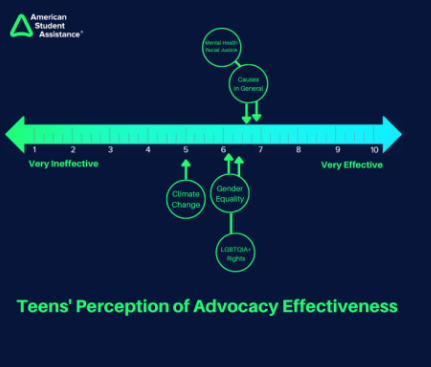At ASU+GSV, ASA convened a panel of experts to discuss the idea of getting students prepared for their futures in school, work, and life. What can educators, parents, and organizations do to ensure that all kids leave school with the confidence to take their unique next step and armed with the knowledge and skills they’ll need to get there? Our Philanthropy Program Manager Jing Cox-Orrell was joined by Mark Baxter of Rodel, Yutaka Tamura of nXu, and Andrew Tucker of the Collaborative for Academic, Social, and Emotional Learning (CASEL). While you can watch the full conversation here, what follows is a summary overview of their conversation.
Are students leaving school ready for their next step? To-date, we can say with some certainty that the answer is generally, “No, they’re not.” Students don’t feel prepared; our research shows. But they also aren’t prepared for the next step that they are widely encouraged to follow – college. Less than half of states have high school graduation requirements that don’t meet the minimum standards for admission at the state’s flagship university. However, even if university isn’t the goal, we can also say that they aren’t necessarily leaving school with the skills they need to go directly into the workforce.
Something has to change. For these panelists and ASA, that means taking a hard look at the skills and the types of learning that are happening in school, and starting with middle school. Social-emotional learning (SEL). Self-discovery work. Finding purpose and identity. Building emotional wellness, social capital, and having chances to do structured career exploration. All of these are absolutely critical to changing both the narrative and the reality for kids coming out of school.
Is this kind of progress happening anywhere? Yes, it is, but only in pockets. SEL, for example, is found only sporadically in school curriculum, at best. It’s largely still thought of as a “soft” skillset, even though evidence shows it’s anything but. Communication and interpersonal skills – things that are vastly important on the job – can be taught. They can be measured. And there are real outputs connected to them. Meaningful outputs: higher graduation rates. Higher postsecondary enrollment rates. More success in careers. And, employers want and need people who have these skills.
And, beyond SEL, while there are some excellent examples of schools helping kids access career exploration and self-discovery activities in a meaningful way, these examples are still outliers, and not the norm. States like Delaware, for example, are taking huge strides in the right direction. While Mark shares that they have work to do on the equitable access front, some 26,000 students in Delaware are now accessing pathways and that number is growing.
As much as students in all states need this kind of learning and these kinds of programs, they cannot and will not happen unless the public awareness of “readiness” shifts away from academic readiness and towards life and work-readiness. It won’t happen unless these concepts are built into the curriculum, and unless teachers are helped and trained to understand and implement this thinking into their day interactions with students. Teachers, understandably, need help shifting their own paradigm from one of “teach this content” (as has long been the norm), to “teach kids why this content is relevant.” They, too, need to be able to find the relevance of new concepts and the ability to see how it will work in practice and help make their jobs easier.
But when that relevance comes alive for kids? Then the spark of real readiness can be lit.



